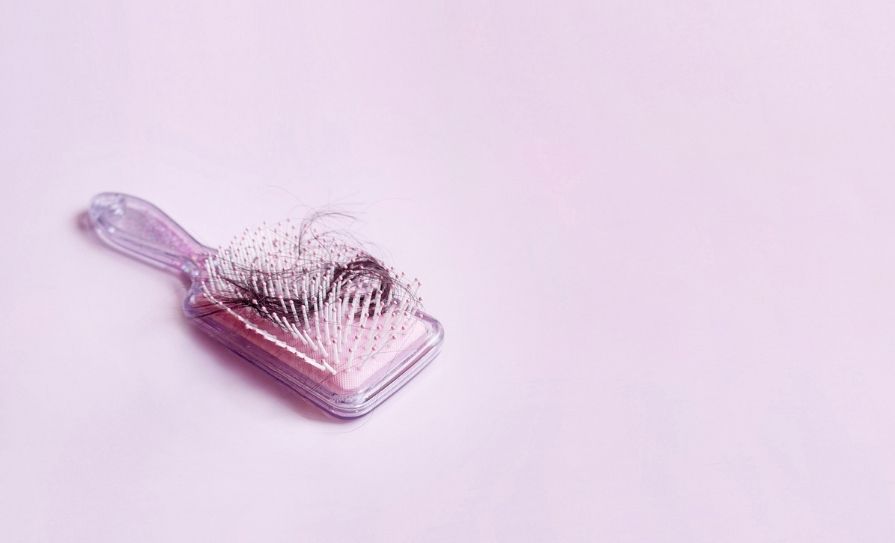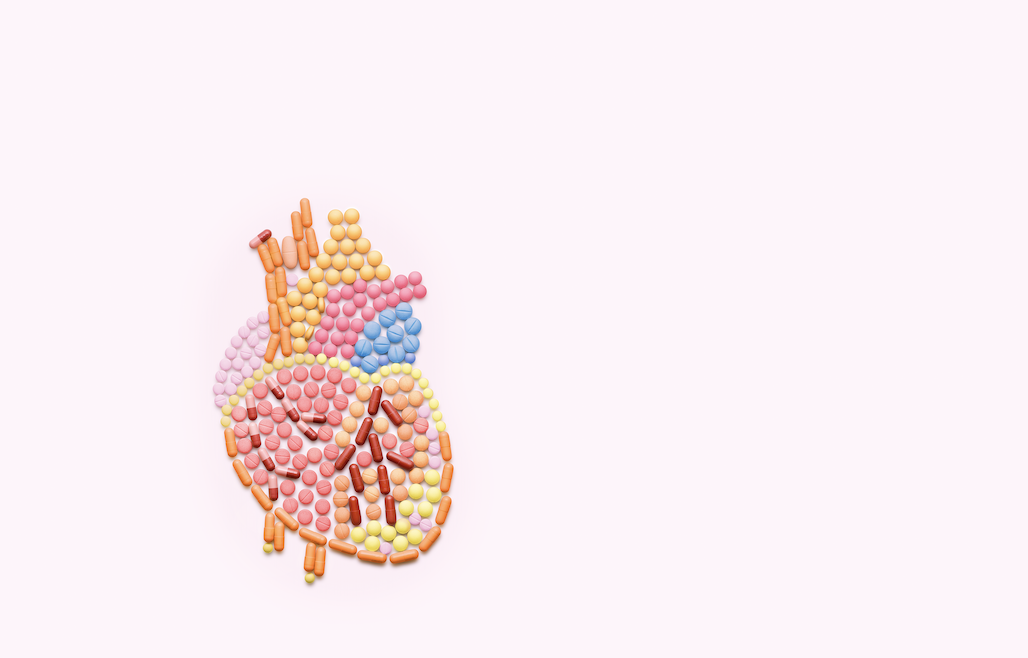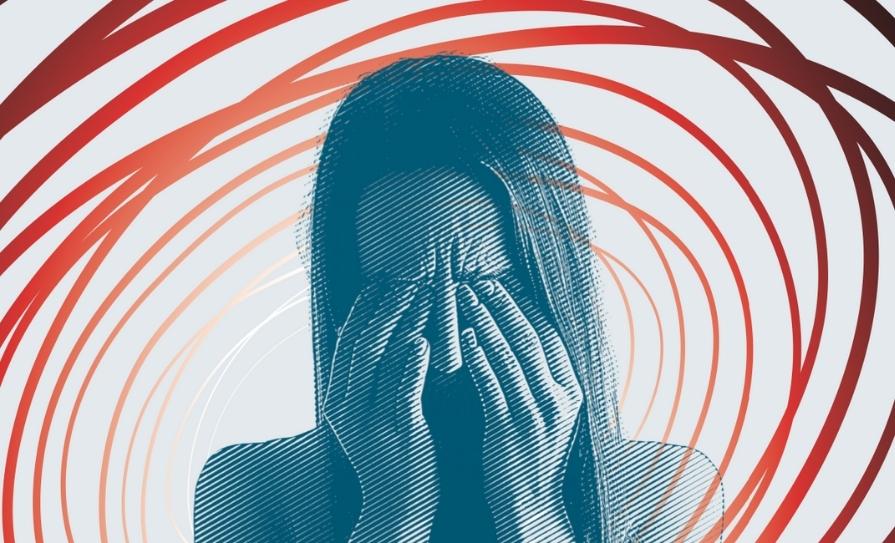Donna Cosgrove MPSI looks at hair and scalp health, including management of hair loss
The hair growth cycle
The hair cycle is composed of four primary phases: Anagen, catagen, telogen, and exogen.
Anagen phase is characterised by hair shaft production from the follicle; catagen and telogen are the regression and resting phase of the follicle respectively, which then results in hair shedding in the exogen phase.1
The duration of these phases varies depending on factors like genetics and body location. Scalp hair follicles, for example, stay in anagen for about two- to-eight years, and eyebrow follicles only about two-to-three months. A range of factors influence this transition from anagen to telogen (Figure 1).
In normal circumstances, the anagen- to-telogen ratio is about 14:1 to 12:1.
In various types of alopecia, there is a decreased ratio of anagen-to-telogen, and hair shedding occurs above the usual rate, which is 100-to-150 strands each day.
When presented with a general complaint of alopecia, all of the possible contributing factors should be considered by taking a patient history. The following should be included:
- Duration of hair shedding.
- Episodic or continuous pattern.
- Estimated percent hair loss.
- Potential triggers and temporal relationships.
- Recent surgery, fever, illness, childbirth, psychological stress.
- History of chronic disease, malignancy, infection, autoimmune disease, liver or renal disease.
- Menstrual history.
- Hair care products and procedures.
- Dietary history, including vitamins and supplements.
- Family history of alopecia and subtypes, autoimmune disease, or thyroid disorder.
- Medication history.
- History of radiation therapy or heavy metal exposure.
Dietary hair health influences
Protein
Studies have identified deficiencies in the essential amino acids histidine, leucine and valine to be common in certain alopecia subtypes. Alanine and cysteine are the most commonly deficient non-essential amino acids. Some studies have shown improvements in hair growth after oral protein-based supplementation, but it is unclear whether protein, or specific amino acid supplementation, is necessary for all patients with alopecia, and what the specific composition of these might be.1
Fatty acids
Omega 3 and 6 fatty acid deficiencies may increase the amount of hair follicles residing in the telogen
phase, resulting in hair shedding. Arachidonic acid (an omega 6 fatty acid) promotes certain growth factor expression implicated in hair growth, and supplementation has been shown to prolong the anagen phase. Studies suggest that fatty acid supplementation may increase the anagen phase duration, promoting hair development.
Vitamins
- Vitamin A can stimulate stem cells and induce anagen phase, but over- supplementation can be linked with hair loss, indicating that vitamin A and its metabolites such as retinoic acid may regulate hair follicle stem cells in a U-shaped, dose-dependent manner.
- Vitamin B3 (niacin), B7 (biotin), and folic acid (B9) have also been implicated in hair loss, although biotin (which is a cofactor in many metabolic processes) is the most comprehensively investigated of these. Genetic biotin deficiency is linked with severe dermatitis and alopecia in infants, and acquired deficiency leads to alopecia and brittle nails. Biotin increases hair strength rather than growth. It is a common ingredient in hair supplements, but there is no evidence that supplementation is necessary in individuals with hair loss who are not deficient.
- The role of vitamin D in hair growth is not completely understood, but it has been suggested that the expression of the vitamin D receptor is required for a normal hair cycle and anagen initiation. More investigations are needed to determine the usefulness of vitamin D supplementation in hair loss, among both hair loss patients who are vitamin D deficient, and those who are not.
- Vitamin E may increase hair count as a result of its antioxidant activity and lipid peroxidation inhibition, but so far there is no conclusive data to back the benefits of supplementation in patients with hair loss.
Minerals
- Iron may impact the hair cycle due to its function as a cofactor in DNA synthesis, but studies show conflicting results.
- Zinc is an important component of enzymes that regulate protein synthesis, and has been associated with excessive shedding and thinning of hair (telogen effluvium; TE) and brittle hair in deficient patients. One study found that zinc levels in 312 alopecia patients were significantly lower than in healthy controls. Zinc-deficient alopecia is readily reversible in zinc-deficient individuals, but supplementation in zinc-replete individuals has no effect on hair growth.
- Selenium has a role in oxidative damage protection and hair follicle morphogenesis. Supplementation has been found to improve alopecia and hair repigmentation in deficient patients, but as with other vitamins and minerals, no improvement is seen when selenium is given to patients with hair loss who are not deficient.
Mechanisms of hair loss
Hormonal imbalances impact the hair cycle and hair growth significantly, ie, thyroid hormones, dihydrotestosterone (DHT), oestrogen, and testosterone. Both deficient and excessive levels of thyroid hormones can contribute to telogen transition and hair loss, therefore thyroid-stimulating hormones and thyroxine levels should be investigated in patients with excessive hair loss.
Although androgens increase hair follicle size in androgen-dependent locations, they can also result in reduction of scalp follicles in later life. DHT (made from testosterone at target tissues) promotes the shortening of the anagen phase and prolongation of telogen, resulting in hair shedding. Men with male-pattern androgenetic alopecia may have a genetic predisposition to greater levels of the hormone 5 alpha reductase, which converts testosterone to DHT, whereas men deficient in this enzyme are less likely to develop the condition.
Inflammation can mediate certain types of hair loss, such as alopecia areata (which is autoimmune in origin) and androgenic alopecia (male and female pattern hair loss). Chronic, systemic inflammatory conditions can also cause excessive shedding and thinning of hair, telogen effluvium.
Oestrogen appears to have protective effects on hair growth, as seen during pregnancy when high oestrogen levels increase hair growth and reduce shedding. Conversely, oestrogen depletion after childbirth or during menopause is associated with conditions like postpartum telogen effluvium and female pattern hair loss, marked by reduced hair density and diameter. Women do not go bald, unlike men, but thinning hair is evident, mainly on the top or front of the head. While this can occur any time, it is more common in postmenopausal women.2
Studies have shown that people under high stress are significantly more likely to experience hair loss, although these studies had small sample sizes.1 Stress not only promotes the transition from anagen to telogen, but also increases cortisol levels. This increase in cortisol disrupts hair cycle regulation, and damages proteoglycans (ie, decorin and versican), proteins that are essential for hair follicle health and growth.
Poor sleep has been linked to alopecia — both the quality and duration of sleep affect hair growth. A set of genes (called clock genes), along with light, regulate the circadian rhythm, and play a role in the regulation of the hair growth cycle.
Medications that inhibit cell division such as chemotherapies impact rapidly dividing cells in the body. The highly proliferative anagen phase in the cell cycle is very sensitive to drugs and toxins. In addition to directly affecting cellular proliferation, the transition to telogen can be accelerated. Hair regrowth can occur after stopping chemotherapy.
Management of hair loss
- Due to the impact of DHT on hair loss, 5 alpha reductase inhibitors such as finasteride are used in the management of male-pattern androgenetic alopecia. This treatment has been shown to be very effective (99 per cent of subjects in two one-year trials showed decreased progression or reversal of hair loss), although associated side- effects include sexual dysfunction and diminished libido. Finasteride, which is approved for use in men to treat hair loss, was not found to be any more effective than placebo for treating hair loss in women.1,2
- In female pattern hair loss, research suggests that a lower oestrogen- to-testosterone ratio may play a key role, rather than absolute hormone levels of oestrogen. Treatments that include an anti-androgen along with an oestrogen replacement may be effective in treating this, but larger studies are required to investigate.
- Cortisol inhibition may promote hair density and regrowth in both male and female pattern alopecia. Ketoconazole, an antifungal cortisol inhibitor, has been shown to increase both hair density and the proportion of hair follicles in the anagen phase, when used by itself (as 2% topical applications), and also when used with minoxidil 2% applications. Ketoconazole can take longer to work (six months) when compared to minoxidil (four months), but leads to fewer side-effects.
- Minoxidil has multiple mechanisms of action, including relaxing blood vessels to increase blood flow, acting as an anti-inflammatory agent, and as an antiandrogen.1 Individuals using minoxidil were shown to have a 2.28 times greater chance of exhibiting hair growth than those using a placebo, with peak hair growth after one year of use. Studies have not shown any difference in efficacy between the 2% and 5% concentrations. A Cochrane review2 found that a 1% minoxidil was just as effective as the 2% concentration.
- Positive results on hair loss stabilisation or regrowth have been reported after scalp massage. This improves blood supply to the scalp, providing the vascular plexuses with nutrients for developing follicles, and optimising waste elimination.
- There are no remedies to prevent chemotherapy-induced alopecia, although scalp cooling may reduce drug delivery to the scalp, and somewhat mitigate the effect.
- For alopecia areata specifically, treatment with baricitinib resulted in an increase in short? and long?term hair regrowth when compared to placebo.3 The efficacy of other treatments on hair regrowth is unclear.
- Complementary medications are commonly used for the treatment of alopecia. In one study performed in a hair loss clinic, 81 per cent of patients used supplements. A systematic review4 found potential benefits from the supplements Viviscal and Nourkin. The same review found some evidence that pumpkin seed oil may be a potential alternative to finasteride for treatment of androgenic alopecia, though evidence strength is limited due to study size.
- Further studies are needed to investigate other treatments such as spironolactone, finasteride (in different dosages), dutasteride, cyproterone, and laser-based therapy.2
Management of hair loss may target one or multiple underlying mechanisms such as hormones, stress, and inflammation. A patient- specific approach is essential to determine the likely contributing factors to hair loss. Considering how common the use of supplements is by patients with alopecia, it is important to offer advice on the safe and appropriate use of these.
Although there is an evidence base for some treatments, there is a need for additional, impartial, clinical studies to compare other treatments to these, and establish suitable dosage regimens.
Author: Dr Donna Cosgrove PhD. Donna’s overall aim is to improve patient outcomes through education. After graduating with a BSc in Pharmacy, she returned to university to complete a MSc in Neuropharmacology. This led to a PhD investigating the genetics of schizophrenia, followed by a postdoctoral research position in the same area. She has worked in hospital, research and community pharmacy settings and is currently a community pharmacist in Galway and a clinical writer.
References
1. Natarelli N, Gahoonia N, & Sivamani RK (2023). Integrative and mechanistic approach to the hair growth cycle and hair loss. Journal of Clinical Medicine, 12(3), 893.
2. van Zuuren, EJ, Fedorowicz Z, & Schoones J (2016). Interventions for female pattern hair loss. Cochrane Database of Systematic Reviews, (5).
3. Mateos-Haro M, Novoa- Candia M, Vanegas GS, Correa-Pérez A, Gil, AG, Fernández-García S, … & Zamora J (2023). Treatments for alopecia areata: A network meta?analysis. The Cochrane Database of Systematic Reviews, 2023(10), CD013719.
4. Drake L, Reyes-Hadsall S, Martinez J, Heinrich C, Huang K, & Mostaghimi A (2023). Evaluation of the safety and effectiveness of nutritional supplements for treating hair loss: a systematic review. JAMA Dermatology, 159(1), 79-86.







